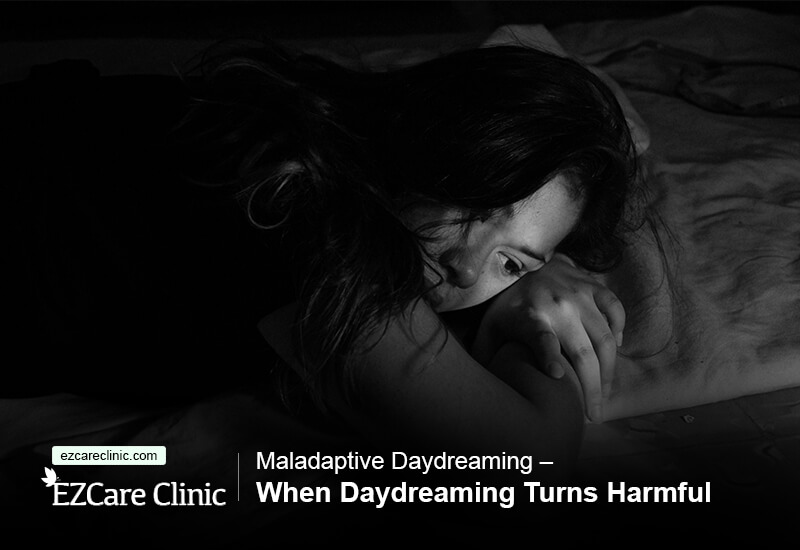Maladaptive daydreaming is a lesser-known psychiatric condition that is characterized by excessive daydreaming. Even when they happen frequently, regular daydreams don’t count as maladaptive. It’s because they’re usually pleasant, and they can be useful as well.
Think about the last trip you planned out in your head or the last epiphany you had in the shower. Technically, you were daydreaming.
The crucial difference between daydreaming and maladaptive daydreaming is control.
Can you control what you daydream about?
Can you end your daydreams at will?
If you find it difficult to control your daydreaming habit, or if your daydreams are becoming intrusive and unpleasant, this guide talks about the nature of maladaptive daydreaming and tells you what you can do about it.
Mental wellness plays a role in improving your life – Improve it with us today!
1. What Is Maladaptive Daydreaming?
Something that’s maladaptive doesn’t easily conform to environments or situations. Therefore, maladaptive daydreaming is daydreaming that interferes with an individual’s day-to-day performance because of its instability.
Maladaptive daydreaming was first defined in 2002 when it was identified by Dr. Eliezer Somer, a professor at the University of Haifa, Israel. Many mental health experts today consider it a real disorder with a discernible impact on daily life.
But as of yet, maladaptive daydreaming is not recognized in the newest edition of the Diagnostic and Statistical Manual of Mental Disorders (DSM-V). As a result, there is no official treatment for it.
One reason why this harmful type of daydreaming is yet to receive official acknowledgment is that it can be hard to distinguish from regular daydreaming. Let’s take a look at some of the characteristics of maladaptive daydreams.
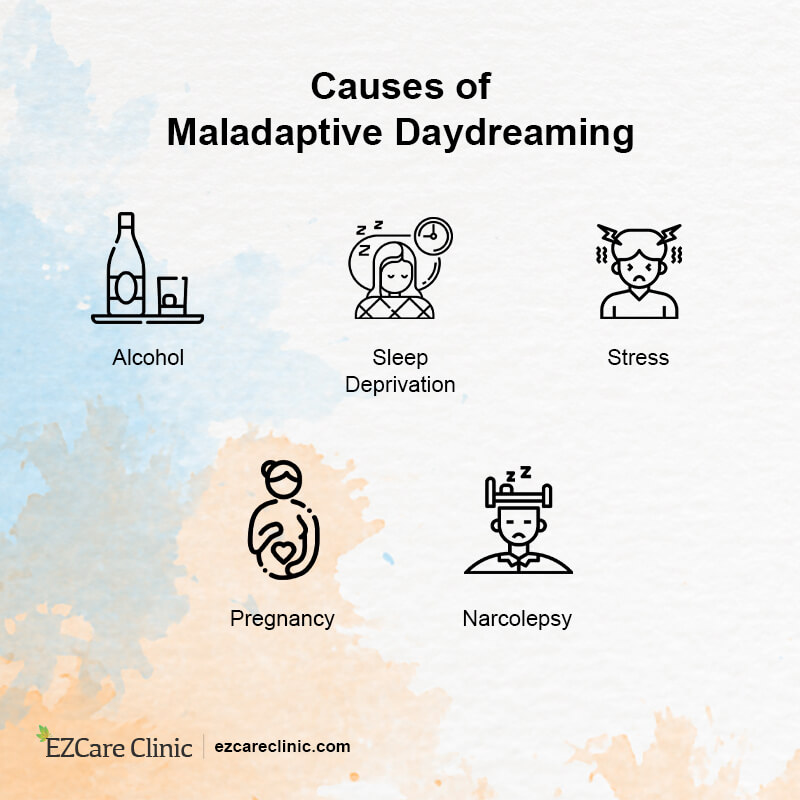
What Does Maladaptive Daydreaming Look like?
Daydreams are a normal, if not integral, part of being human. In fact, you can spend up to 47 percent of your waking hours lost in a daydream if you allow your mind to wander.
But when you daydream excessively, enough so that it starts affecting your ability to perform regular tasks and socialize, then that can be harmful.
One characteristic of maladaptive daydreaming is that it’s usually vivid and well-planned; thus, it’s capable of taking up hours of your time.
It’s easy to get lost in this fantasy realm and forget your duties and obligations in the real world. That’s what makes maladaptive daydreaming so dangerous—it can distract you from the present and affect all areas of your life.
Owing to the lack of scientific research, the prevalence of maladaptive daydreaming remains unknown.
What we know is it is more common in people who account for over half the population of maladaptive daydreamers with pre-existing mental health issues such as:
- OCD
- Depression
- Anxiety
Click below to schedule your appointment with a professional at MEDvidi.
Daydreaming Vs. Maladaptive Daydreaming
The main difference between daydreaming and maladaptive daydreaming is intensity.
Maladaptive daydreaming tends to be an immersive experience that can elicit verbalization, facial expressions, and repetitive movements, whereas daydreaming is usually light and pleasant.
Harmful daydreaming is also more likely to be based on negative themes such as violence and confinement.
Some maladaptive daydreams can be pleasant, but they’re rarely healthy if they include fantastical details (such as your ability to fly). More crucial to note is the purpose of the daydream.
We daydream when we want to plan future events, escape boredom, become more creative, or attach meaning to our identity. But maladaptive daydreaming is all about escaping reality and self-soothing.
When it becomes so habitual that we have no control over it, you may start to experience deeply intrusive thoughts that revolve around hurting people or getting hurt yourself.
Here is a summary of the differences between maladaptive daydreaming and regular daydreaming.
Daydreaming | Maladaptive Daydreaming |
Remains under control | Difficult to control or stop |
It lasts for a short period | It can last for hours |
An escape from boredom | Your permanent source of enjoyment and pleasure |
Provides mental relief | Provides emotional relief |
Feels unimportant | Feels more important than real life |
Relieves mental tension | Can cause psychological impairment |
Meant to boost creativity and productivity | Drastically reduces productivity |
How Does Maladaptive Daydreaming Start?
In most cases, maladaptive daydreamers conjure up their complex imaginary realms as a means to escape their real life. There are various reasons why an individual may decide to avoid real-life interactions and obligations.
Some of them are:
- Psychological Illnesses – Schizophrenia, OCD, and anxiety can make people avoidant.
- Sleep Deprivation – It can make people less sociable and therefore less keen on social interactions.
- Substance Abuse – Can induce feelings of shame that make others want to be alone.
- Pharmaceutical Drugs – Some drugs can affect brain chemicals (like beta-blockers), making people less sociable.
Maladaptive daydreams are born as a response to:
- Loneliness
- Hardships
- Helplessness
In other words, these daydreams are the only means of escape from a reality that is too harsh to manage.
Mental health is preserved wealth – Let us help you maintain it.
2. Types of Maladaptive Daydreaming
We all daydream, even when we think we’re not. Daydreams exist in different variations, most of which are beneficial, but some of which are quite negative. If your daydreams don’t motivate you and increase your creativity, they’re most likely stressing you out by generating unreasonable expectations.
How do you tell which type of daydreaming is helpful and which one you should avoid? To do that, you’ll need to know all the types of daydreaming. Here’s a quick breakdown:
Planning
Even when you stop to plan for something in the near future, you’re fantasizing. Daydreams involve any thoughts or mental procedures that draw your consciousness away from external stimuli.
Even though it is a necessary human behavior, mental planning does detach your mind from its physical surroundings and focuses it on the abstract concept of creating a plan. In other words, planning is a form of daydreaming.
Fantasizing about a Future Event
Our ability to plan ahead heavily rests on the human capacity to think about and mentally act upon future actions. That’s why most of us daydream by thinking about the future. It’s a necessary skill in this day and age.
Thinking about the future allows us to predict our reactions to various stimuli, prepping bad experiences to handle them better.
Thinking About The Past
Even though we’re a mostly future-oriented species, human beings can’t stop thinking about the past. As an activity, thinking about the past has tremendous evolutionary value.
By reminding ourselves of our past experiences, we can relate them to current and future events to act in safer ways and produce more favorable outcomes.
Most of our trips to the past involve memories, experiences we had alone or shared with others. Even though you’re thinking about something that’s already happened, they still count as daydreaming.
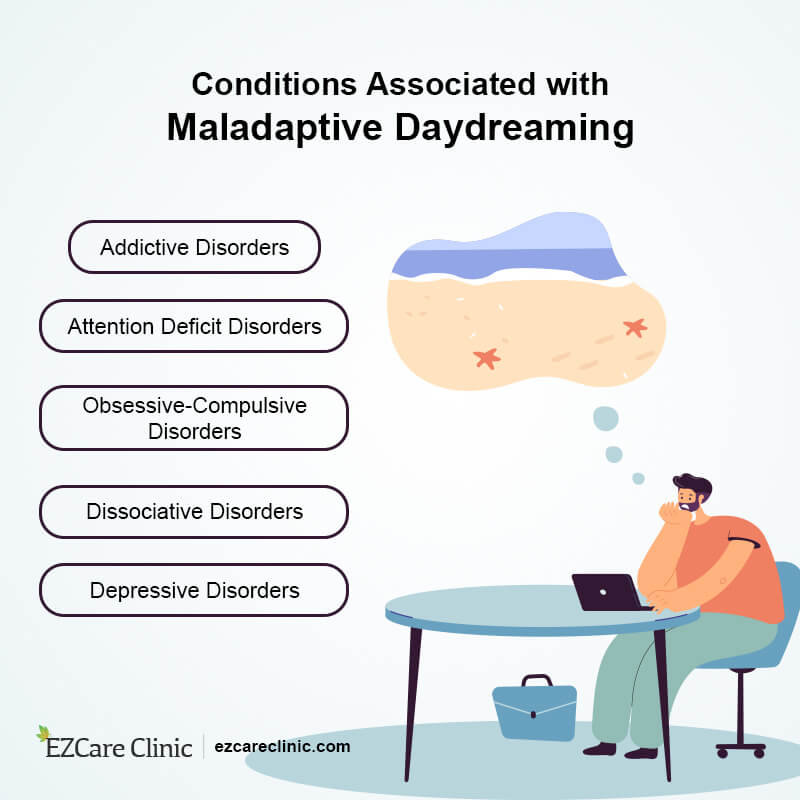
Visualization
Of all the forms of daydreaming we know, visualization is probably the most useful. It allows us to predict or plan our next few movements, which is useful when you want to create a mental plan of action.
For example, you can visualize your day when you wake up by thinking about what you’ll do after you get out of bed or how you’ll carry out your plan for the week.
Visualization is usually very deliberate. None of it is random because you’re intentionally thinking about specific parts of your life in relation to your main goals and objectives.
Building Castles in the Air
Sometimes, our daydreams are nothing more than whimsical narratives buried in our minds.
When we allow our minds to wander with no definite goals, what we’re doing is called fantasizing. We often fantasize about our deepest desires and ambitions.
For example, you can fantasize about a romantic love interest, a physical transformation you’re looking forward to, or even a professional achievement.
Fantasies like such don’t have an immediate benefit like visualizations, but they play a significant role in keeping us motivated enough to set and work for the things we desire.
Rumination
A rumination is rarely a positive form of daydreaming. It involves thinking about the same thoughts over and over, and in most instances, these thoughts are dark and sad.
You can ruminate on something because you’re looking for insight or meaning to it. You can also find yourself ruminating about a past physical or mental trauma.
Rumination appears naturally when you’re dealing with immense stress regularly.
Escaping Reality
Tedious or strenuous tasks sometimes force the brain to seek escape through daydreaming. There are positives to daydreaming as a form of replenishing mental energy, but there are obvious negatives to it as well.
For instance, daydreaming to escape reality will make you miss out on important duties and tasks.
When that happens, it becomes a cause of stress. In moderation, however, daydreaming can momentarily boost creativity and help you solve difficult problems. But daydreaming as a form of escapism is inherently bad because it can increase stress and anxiety.
Even though your brain relies on it to avoid pain and distress, it can be considered maladaptive and harmful if it becomes habitual.
Click below to schedule your appointment with a professional at MEDvidi.
Daydreaming Styles
There are three styles of daydreaming:
- Inattentive – This form of daydreaming appears in people who have difficulty concentrating and managing stress. The daydreams usually contain short, wishful images and creative thoughts, but they’re usually fleeting and meaningless.
- Constructive – When you find your thoughts wandering when faced with difficult external work or trying to digest an idea, it could be because your mind is trying to look for creative ways to solve the problem.
- Guilty-dysphoric – When daydreams are mostly unproductive fantasies, which only serve to torment or punish ourselves, then these are guilty-dysphoric daydreams. In such daydreams, we only focus on our perceived weaknesses and obsessively ruminate on emotions such as worry, wrath, and guilt.
3. Is Daydreaming a Sign of Mental Illness?
Everyone daydreams, and even if you do it more than others that doesn’t mean that it is maladaptive. But daydreaming excessively—to the point where your relationships suffer, and you don’t perform your duties and obligations—could hint at an underlying problem.
Non-stop daydreaming suggests a concentration problem.
Lack of concentration is a symptom shared by mental illnesses such as:
- Post-traumatic stress disorder (PTSD)
- Anxiety
- Depression
- ADHD
You can’t really pinpoint maladaptive daydreaming from the quality of your daydreams alone.
In most cases, you’ll only know that your daydreams are getting out of hand when you observe other symptoms of mental health. If you can link your increased daydreaming to any of the following signs of mental illness, then you could be dealing with maladaptive daydreaming:
- Unfocused thoughts
- Lack of concentration
- Feelings of deep sadness
- Extreme mood shifts
- Withdrawal from social interactions
- Irritability, anger, and hostility, can easily turn into violence
- Paranoia, hallucinations, and general detachment from reality
- Inability to cope with stress
Mental illness is not a personal failure. So don’t be afraid to get help with us today!
The only link between maladaptive daydreaming and mental health problems is that it is associated with negative outcomes in the form of distressing, intrusive thoughts.
Intrusive thoughts are a common characteristic of:
- OCD
- Anxiety
- Depression
- Schizophrenia
They usually revolve around the following scenarios:
- Hurting or even killing someone
- Hurting or killing yourself
- Losing a loved one
- Getting a deadly disease
- A natural disaster happening out of the blue
Maladaptive daydreaming tends to circle around negative thoughts and ideas, and if left to continue for a long time, it can be hazardous to your mental and physical wellbeing.
It’s one thing to daydream about being the richest person in the world, which most of us have probably done before. But when you start to daydream about bad things happening to you or your loved ones, your quality of life can go down quite dramatically.
Negative daydreams tend to be just as detailed as positive ones. You may be driving to work when suddenly, thoughts of crashing into the oil tanker in front of you fill your mind.
You start to envision how the impact would feel like or how the hot flames would engulf you. Clearly, maladaptive daydreaming is nothing to take lightly. At best, it will make you miserable and paranoid, and at worst, it can drive you to commit actions with serious consequences.

Some of the negative effects of maladaptive daydreaming include:
Loss of Productivity
When you’re constantly distracted by intrusive daydreams, your focus tends to suffer first. You become unable to meet deadlines and fulfill your professional obligations. The first victim of maladaptive daydreaming is usually your ability to be productive.
Memory Problems
When you can’t focus long enough to see your actions in the present, you become incredibly forgetful. Your memory is only as good as your attention span. When daydreams take up most of your attention, it will be impossible to remember even your most recent action.
Negative Thinking
It’s easy to spiral down a dark path when most of your waking hours are filled with negative thoughts about your self-esteem or self-image. Maladaptive daydreaming can fill your head with tons of bad thoughts, which in turn will cause you to isolate yourself from others—a vicious cycle that only leads to more harmful daydreaming.
Depression
Self-esteem issues, especially when they’re constant, will likely lead to depression.
Anxiety
Constantly thinking about bad things and having a poor self-image of oneself can lead to a lifetime of worry, fear, and paranoia.
Injury
One feature of maladaptive daydreaming is that it is hard to control. A wandering mind can be dangerous when driving or operating machinery. You can easily be injured if you get distracted while handling something dangerous.
Suicide
Envisioning self-harm constantly has its toll. Unfortunately, extreme cases of maladaptive daydreaming, especially when they entail thoughts of self-harm or harming others, can lead to suicide. Clearly, maladaptive daydreaming can be dangerous if left unchecked. You need to seek immediate professional help if you suspect that you or a loved one is dealing with a psychiatric condition.
Click below to schedule your appointment with a professional at MEDvidi.
4. Maladaptive Daydreaming Test
To quickly establish whether you have maladaptive daydreaming, here is a thorough self-evaluative maladaptive daydreaming test that will not only answer your question but also tell you the severity of your symptoms.
Agree | Slightly Agree | Disagree | |
Do you spend hours daydreaming? | |||
Do you daydream during social interactions? | |||
Do you daydream when you should be working or studying? | |||
Are you usually eager to get back to an interrupted daydream? | |||
Do you hate not having time to daydream? | |||
Does your body become physically engaged in your daydreams? (Finger tapping, pacing, spinning in a chair, etc.) | |||
Do you consider daydreaming pleasurable? | |||
Do your daydreams revolve around a specific thought? | |||
Do the characters in your daydreams feel real? | |||
Do you feel emotionally attached to the characters in your daydreams? | |||
Do you project your traumas and insecurities onto the characters in your daydreams as a coping mechanism? | |||
Do music, long car rides, movies, places, and other specific things trigger your daydreams? | |||
Do you feel like you daydream too much? |
Key
Disagree – 0 points
Slightly agree – 1 points
Agree – 2 points
Scale
Below 8 points – Normal
8 – 13 points – Moderate
Above 13 points – Severe
5. Signs of Maladaptive Daydreaming
There is no definitive list of
They create these intricate inner worlds so that they have a place to escape when reality becomes too much. As a consequence of spending hours daydreaming, they become attached to the worlds and characters they build in their heads.
When daydreaming becomes your only source of relief, it’s easy to develop an unhealthy emotional attachment that borders on addiction. You may find it harder to study or work, interact with friends and family, and even take care of your personal hygiene.
Identify the signs of unhealthy emotional attachment with us and get your treatment today!
Maladaptive daydreaming can make normal life very difficult, especially when your daydreams become more appealing than your reality. The lack of formal symptoms notwithstanding, maladaptive daydreaming has definitive signs by which you can identify it:
- Abnormally long daydreams
- Difficulty ending your daydreams
- Extra vivid and intense daydreams with advanced plotlines and characters
- It becomes a constant distraction that affects your ability to carry out daily tasks
- Real-world events and stimuli can trigger long daydreams
- Your body engages in repetitive movements, facial expressions, and talking (or whispering) without your knowledge whenever you daydream
- You have a strong (almost addictive) desire to daydream constantly
- You have sleep problems
- Your attention span is very short
How to Diagnose Maladaptive Daydreaming?
How do you diagnose a condition that’s not formally recognized by the majority of experts? Even though there’s not enough evidence to suggest that this form of daydreaming constitutes a mental illness, it shares an uncanny relationship with dissociative identity disorder (DID).
DID causes a state of detachment from reality and pushes people towards fantasies and disillusionments. The only difference is that maladaptive daydreamers are aware of their true reality. The most credible test for diagnosing harmful daydreaming is called the Maladaptive Daydreaming Scale (MDS), a scale with questions that identify the most typical experiences a maladaptive daydreamer might have.
The scale covers five major areas:
- The content and vividness of daydreams
- The ability to end the daydream or redirect attention as needed
- The distress levels caused by the daydreams
- The perceived benefits of the daydreams
- The level of disruption caused by the daydreams
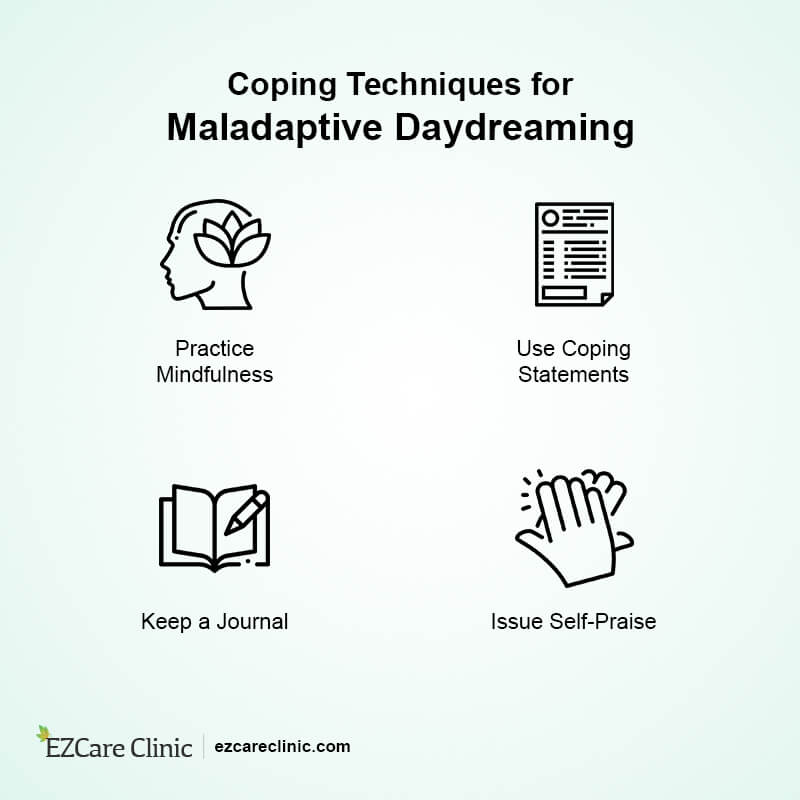
6. Maladaptive Daydreaming and ADHD
Even though maladaptive daydreaming is predominantly a coping mechanism, it is linked to various mental illnesses too. For instance, it shares a 76.9 percent comorbidity rate with ADHD, which means if you suffer from ADHD, you’re more likely to develop maladaptive daydreaming.
ADHD is known for inattentiveness and lack of focus, and it’s not uncommon to daydream constantly when your mind is restless. There is a connection between ADHD and maladaptive daydreaming, and we’ll try to uncover it in this section.
How ADHD Could Be Related to Maladaptive Daydreaming?
ADHD is characterized by impulsivity and hyperactivity. Both children and adults with ADHD find it hard to focus on one task for long periods. ADHD, whether it is predominantly inattentive, hyperactive-impulsive, or a mix of both types, has behavioral traits that somehow align with the escapist tendencies of maladaptive daydreamers. Common symptoms include:
- Prone to distraction
- Trouble focusing on one task
- Forgetfulness
- Short attention span
- Restlessness (trouble staying still)
- Poor social habits (interrupting people when they’re speaking)
Click below to schedule your appointment with a professional at MEDvidi.
So, What Is the Link between ADHD and Maladaptive Daydreaming?
People with ADHD find it hard to move from task to task owing to their impaired brain chemistry. The same lack of focus makes it immensely difficult for them to quell a wandering mind, which means that daydreaming is far more intense for people with ADHD.
Their brains’ lack of ability to self-regulate can make it harder for them to snap out of a daydream. In some cases, they may not even know that they’re daydreaming.
ADHD can also increase the intensity of daydreams because people with ADHD tend to hyper-focus. Not even calling their name can break them out of their daydreams. That sort of daydreaming is enough to negatively impact their relationships, academics, and careers.
Does that Mean that if You Daydream Excessively, You Have ADHD?
There is a strong possibility that if you constantly daydream, you suffer from ADHD. Not everyone with ADHD experiences maladaptive daydreams, but maladaptive daydreamers may suffer an underlying mental condition, which is most likely ADHD.
It’s true that daydreaming may provide some relief and comfort to the restless brain and scattered thoughts of an ADHD patient. But having maladaptive daydreaming does not automatically point to ADHD. The only way to know for sure is to get a proper diagnosis.
Your mental health is important to us. Let us take care of it.
7. Treating Maladaptive Daydreaming
Even though maladaptive daydreaming lacks any form of science-backed treatment, researchers are able to treat it (relatively speaking) using some of the methods that are effective against known mental illnesses. Therapies used in anxiety, PTSD, and OCD treatment can come in handy when dealing with maladaptive daydreaming.
The main strategy, even though it is based on anecdotal evidence, revolves around managing the patient’s symptoms. Some of the effective methods include:
- Mainstream therapy – Counseling is an excellent place to start looking for help with your daydreaming issue. A therapist that specializes in trauma management can be especially helpful since they can help you form the correlation between your trauma and your maladaptive daydreaming. The trauma therapist has one important role, to help you identify the source of your problems. Therapy sessions are useful for resolving past traumas that could be the underlying cause of your maladaptive daydreaming.
- Third-wave therapy – Third-wave therapy, including dialectical behavioral therapy and acceptance commitment therapy, teach people to leverage mindfulness in order to be more present and in control of their thoughts and feelings. Mindfulness is a meditation technique that keeps you present at the moment. Like meditation, it takes a lot of practice to be constantly mindful. But those who master it have complete control over their mental well-being.
- Noting your symptoms – If you notice your symptoms in time, you can take action and prevent the maladaptive daydreaming from escalating into something more harmful.
- Medication – In severe cases, maladaptive daydreaming can be treated by prescription drugs like Fluvoxamine, an OCD drug that quells unwanted thoughts and urges (obsessions).
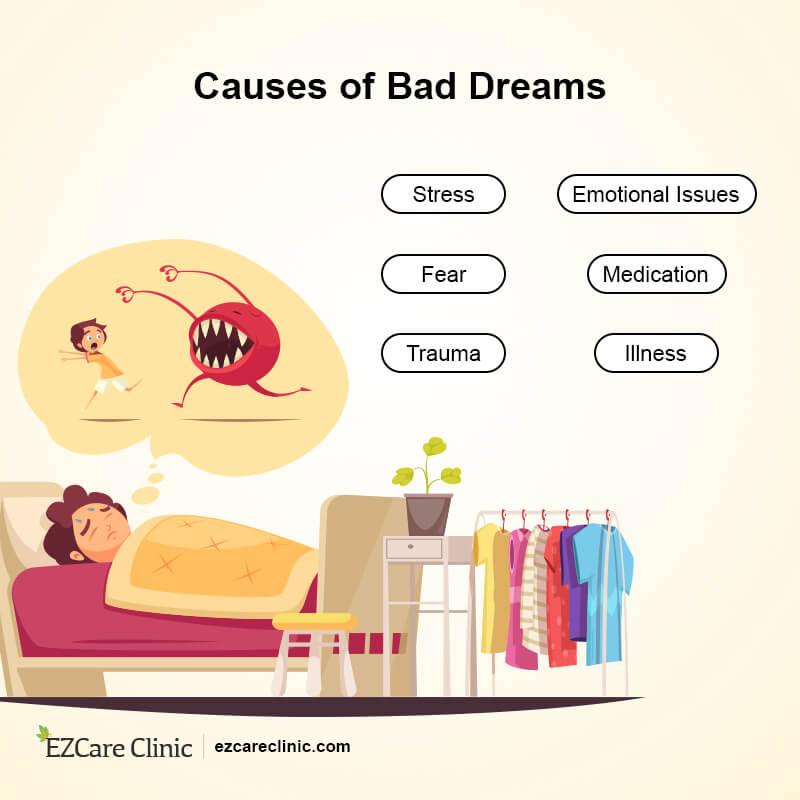
8. Managing Maladaptive Daydreaming
Because it is totally involuntary, maladaptive daydreaming can quickly turn habitual. It takes a while before you even realize how much it is affecting you. The good news is that you don’t need to wait for a medical diagnosis to start taking action. It’s possible to overcome maladaptive daydreaming using nothing more than your strategies and willpower.
This final section talks you through six helpful strategies for managing maladaptive daydreaming. Here they are:
Identify the Root Cause
To solve any problem, you must first address the underlying cause. Therefore, the first thing to do is to understand why you’re having maladaptive daydreams in the first place. You can arrive at your answer by observing your daydreams. What do you fantasize about? Do you know when it starts? What are the triggers?
It’s possible to know why you daydream about certain things. For example, if your escape is a perfect world with no pain, the chances are good that your current life is full of pain and hardship.
Watch Out for Triggers
Anything that can trigger your daydreams should be avoided.
Triggers include events, places, feelings, sensory stimuli (music, taste, smells, etc.), and even people. Once you know exactly what causes you to daydream, you can monitor your surroundings and note how many triggers are around you.
For instance, you may notice that your daydreams kick off every time you get in the car for a long drive or when you hear a certain type of music. You may also begin to daydream when you enter certain spaces, such as classrooms.
Create a strategy to avoid your triggers. For example, if working from your bedroom causes you to daydream, then get out of the house and work from the library or a local coffee shop instead.
Click below to schedule your appointment with a professional at MEDvidi.
Stay Busy
With a lightweight routine where you don’t have to work as much, it can be hard to keep your mind occupied. An idle mind is more prone to daydreaming, so staying busy is one sure remedy for maladaptive daydreaming. If you don’t have chores that can keep your mind busy, consider getting new hobbies, planning the next day, playing mentally stimulating games (like Sudoku), and doing fun activities.
Get Enough Sleep
Several studies link daydreaming to poor sleep quality. Inadequate sleep also causes memory problems, slower reaction times, inability to focus, and trance-like states. Therefore, one way to prevent maladaptive daydreaming is to get enough sleep every night.
Don’t drink caffeine or alcohol at night, as they’re known to be sleep disruptors. Create and stick to a sleep schedule that ensures you sleep and wake up at the same time every night. You can also create a ritual that will prepare your brain for bedtime. This may include brushing your teeth or showering or reading before bed.
Monitor the Frequency of Your Daydreams
Reducing maladaptive daydreaming is a gradual process. You won’t be able to stop all at once. In fact, you’re more likely to make progress slowly in small steps. The key to doing this is to slowly measure your daydreams.
Start small with a few minutes on the timer. See how many daydreams occur within 10 minutes, and then go for 20 minutes, then half an hour, then a whole hour. See how many times you catch yourself daydreaming within these timeframes.
Your only goal is to reduce the number of daydreams you have per specific period. However, it’s possible not to catch yourself daydreaming, especially since it can be involuntary at times. In such an instance, it’s okay to allow the timer to be your interruption until you teach yourself to be more aware.
This is the best method for actively reducing how much you daydream. Self-monitoring may take some time to work, but it is as good as any behavioral modification technique you can learn in therapy.
Track Your Progress through Journaling
Journaling is akin to killing two birds with one stone. On the one hand, it helps you to keep your thoughts organized. On the other hand, it keeps you focused on the present, thereby preventing your mind from slipping into daydreams.
Journaling is a great way to slow down when you feel your mind craves escape.
Instead of creating sophisticated worlds, you can write down how you feel in detail, thereby understanding why you need to daydream while simultaneously curbing the urge. Journaling provides space for self-discovery, slows down your thought process, and helps to relieve tension and stress.
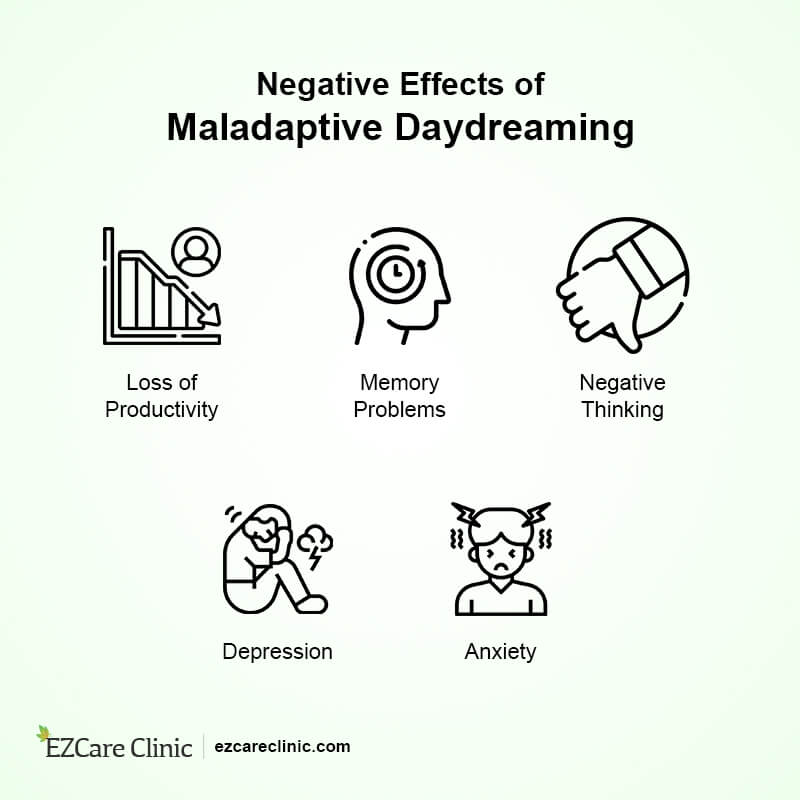
Final Thoughts
Maladaptive daydreaming is not a formally recognized psychiatric condition, but experts still believe that it is a condition that’s capable of causing significant disruptions in a person’s life.
This type of daydreaming is more commonly seen as a symptom of an underlying mental illness, and it has a strong comorbidity rate with ADHD. However, it can also appear in cases of OCD, anxiety, and depression.
When left untreated, maladaptive daydreaming can cause significant mental and physical problems. It can reduce your quality of life and put you at risk for other mental health problems. In some cases, maladaptive daydreaming can lead to physical harm.
Most of the time, it causes intrusive thoughts that instill ideas to harm oneself, but a bigger concern is the way it can sneak up on an individual and distract them from an activity that requires their full attention.
People with maladaptive daydreaming will constantly express how it affects their day-to-day living. For them, daydreaming is an escape, an inner fantasy that they cannot stop or control on their own.
The best advice to give someone like that is to seek immediate therapy. Talking to a counselor can help people with maladaptive daydreaming to better understand how they can manage their condition. It is the all-important first step to developing healthy coping mechanisms.
Instead of being scared, let us discuss the issues surrounding your mental health.
